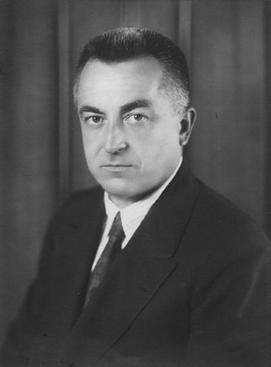Raymond Hood: The Pioneer of Modern American Architecture

Shaping some of America’s most beautiful skylines and advocating for larger assemblages of land that would enable grander buildings with functions more readily defined, the American architect, Raymond Hood, is celebrated as the 20th-century’s greatest molder of skyscraper form, who worked primarily in the Art Deco style.
Best-known for designing the Tribune Tower in Chicago, the architect was born on March 29, 1881, in Pawtucket, Rhode Island. He went on to graduate with degrees in architecture and design from Brown University and MIT. After graduating, he attended the prestigious Ecole des Beaux-Arts in 1911. It was during his studying in France that he learned Art Deco, a style of architecture that focuses heavily on luxury with ornate exterior designs. It would eventually become his signature architecture style.
After finishing up his education, Hood joined forces with architect John Mead Howells. In 1922, they submitted the Neo-Gothic design for Chicago Tribune Building competition and won first prize. The Tribune Building was one of many Neo-Gothic skyscrapers influenced by Cass Gilbert’s Woolworth Tower (New York City, 1913). Winning the competition launched Hood’s career.
Later, in partnership with J.A. Fouilhoux, Hood turned away from the revival of past styles. Over the next several years, they designed brilliant buildings including the American Radiator Building, Rockefeller Center, and the New York Daily News Building. The Daily News (New York City, 1930) and MacGraw-Hill buildings (New York City, 1930-31) have clearer lines, foreshadowing their Rockefeller Center (1929-40).
Although Hood would postulate ever grander plans for Manhattan, including his “City under a Single Roof” (1931) and “Manhattan 1950” (1931), these plans proved too ambitious even for the city that thrives on improbability and egos. Despite a panache for the overly idealistic and fanciful, Hood’s built designs are grounded by surprisingly utilitarian and bureaucratic parameters. And though he was fond of flourishes, beginning with Gothicism and graduating to Art Deco, Hood’s pragmatism made him the ideal choice for metropolitan projects that sought to redefine the scale of civic and corporate architecture in the twentieth century.
Raymond Hood died at age 53 and was interred at Sleepy Hollow Cemetery in Sleepy Hollow, New York.
References:
https://sites.google.com/site/walkingoffthebigapple/thenewyorkofraymondhood.architect
https://study.com/academy/lesson/architect-raymond-hood-biography-buildings-structures.html
www.geni.com/people/Raymond-Hood
www.biography.com/people/raymond-m-hood-40490
www.nytimes.com/1984/01/03/arts/raymond-hood-and-his-visions-of-skyscrapers.html
www.britannica.com/biography/Raymond-M-Hood
www.archdaily.com/784348/spotlight-raymond-hood
https://en.wikipedia.org/wiki/Raymond_Hood
www.dailyartfixx.com/resources/artist-birthdays
